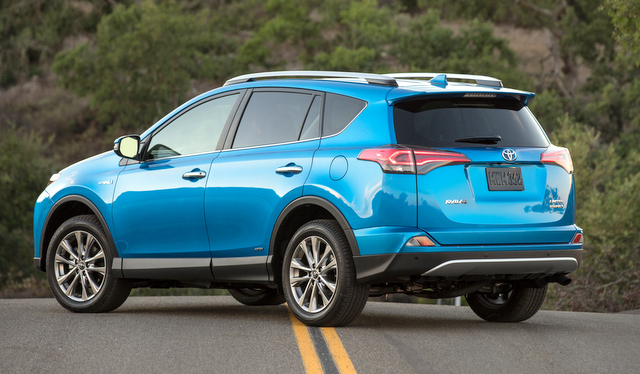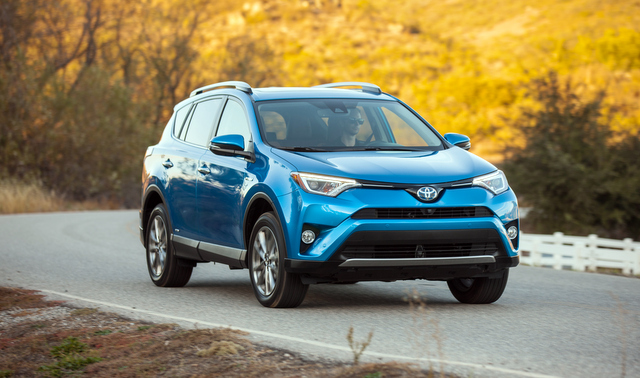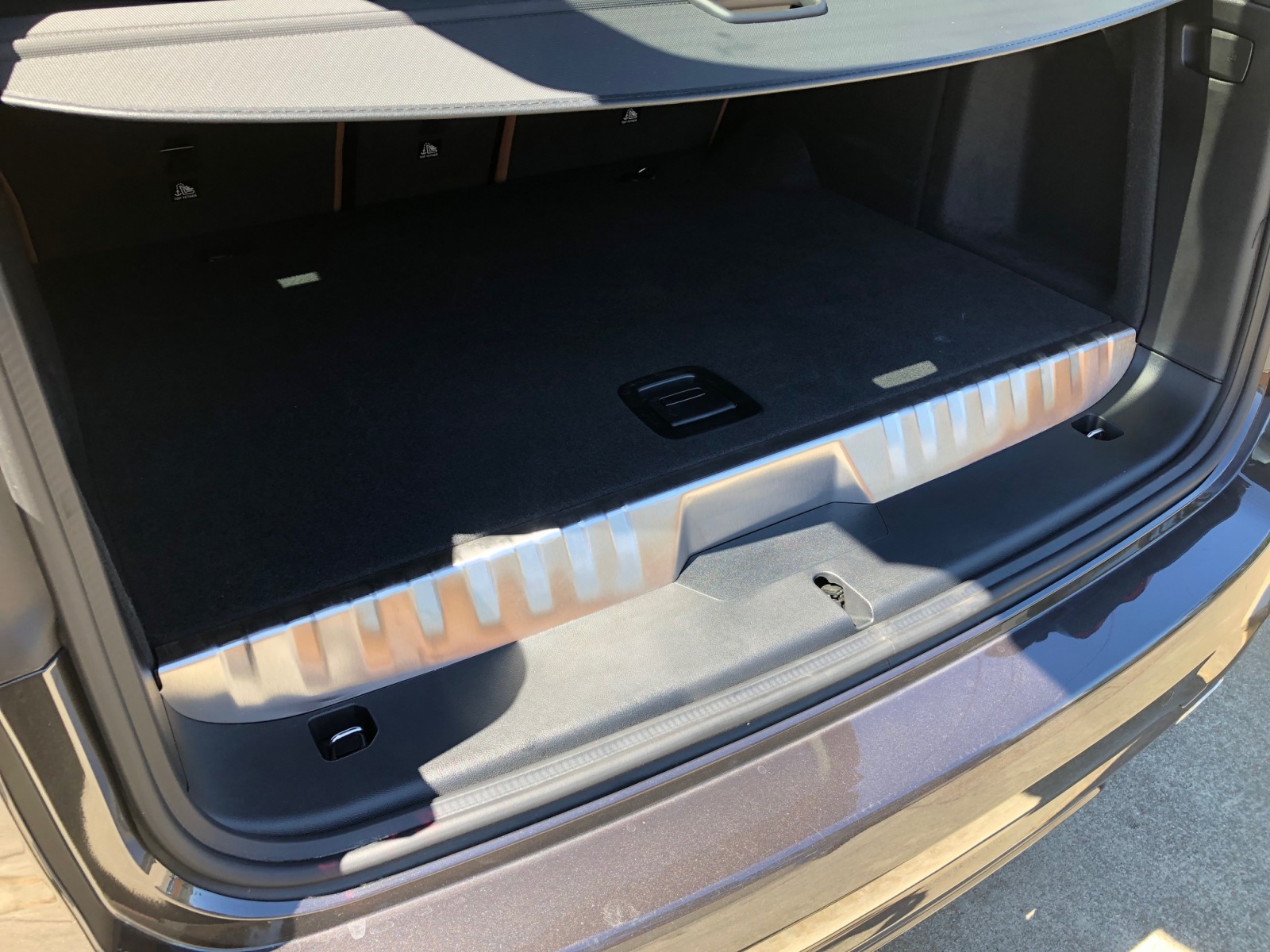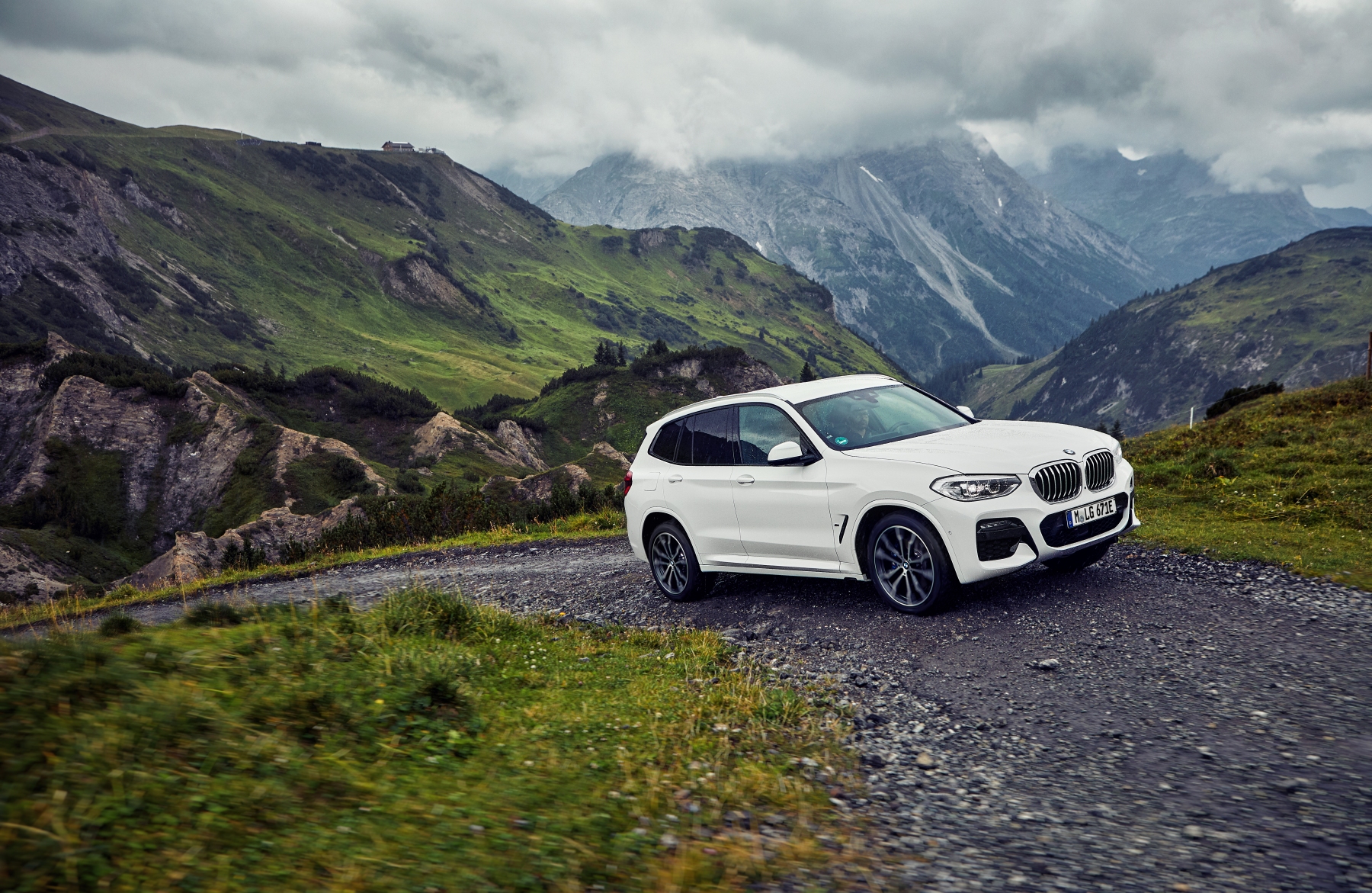Great Versatility and Exceptional Fuel Economy
Gee, Toyota, you introduced that little thing you called RAV4 to the U.S. in 1995. It ushered in what we now call a crossover vehicle — the combining of some of the attributes of a sport-utility vehicle with the underpinnings of a passenger car. Of course, we didn’t know then it was a crossover vehicle, so we just called it a “cute ute.” The three-door version was especially cute.

Then, four years later you brought us a not so cute, but very fuel efficient, little car called the Prius. It ushered in the gasoline-electric hybrid drivetrain that, by the way, confused a lot of folks at first. Of course, people aren’t confused any more. There were more than 30 hybrid models sold in 90 world markets bearing either the Toyota or Lexus names and sales tallied more than eight million globally before you came to your senses and placed a gasoline-electric powertrain in the RAV4 in 2016.
What’s interesting is, none of those more than eight million hybrid vehicles sold had a RAV4 badge. After all, Ford sold an Escape Hybrid crossover along with its Mercury Mariner Hybrid sibling from 2005 to 2011 with some 200,000 finding driveways.
So Toyota, have you ever wondered how many RAV4 Hybrids you might have sold if you brought it out say 10, or even 5 years ago?
Green Car Buyers Love the RAV4 Hybrid
Would’ve, could’ve, should’ve is over. Now in its third year, the RAV4 Hybrid is, gasp, threating to unseat the Prius as Toyota’s best selling hybrid. Through March of this year, the 2018 Toyota RAV4 Hybrid trails the number of Prius’s sold by less than 700 units.

For 2018, Toyota ushered in a more affordable trim with the introduction of the RAV4 Hybrid LE. At $28,230, including destination charges, the new Hybrid LE is just $1,325 more than an equivalent gas-powered RAV4 LE. That snuffs the argument that hybrids are priced thousands more than standard vehicles and reduces the time it will take to recoop the higher initial costs through fuel savings..
The balance of the lineup includes the XLE ($30.129), SE ($33,284) and the top end Limited ($35,129). All models come standard with all-wheel drive (AWD).
As for fuel economy, the 2018 Toyota RAV4 Hybrid receives an EPA rating of 34 mpg city/ 30 highway/32 combined for all models. That’s nearly 25 percent better than the all-wheel drive gas model’s 26 mpg combined rating. And of course, those EPA numbers earn the RAV4 Hybrid a membership in Clean Fleet Report’s All-Wheel Drive 30 mpg Club.
AAA is forecasting that the national gas price average will be as much as $2.70 per gallon this spring and summer. At that price, it will only take most drivers less than a year to make up the $1,325 difference between the RAV4 Hybrid and the gasoline-only RAV4.
Proven, Familiar Hybrid Drivetrain
The 2018 RAV4 Hybrid uses Toyota’s Hybrid Synergy Drive, a system similar to those in the Toyota Highlander Hybrid SUV, Lexus ES 300 sedan and the Lexus NX 300h small luxury crossover. That means a 150-horsepower, 2.5-liter Atkinson-cycle four-cylinder gas engine is combined with a 141-horsepower small high-torque, permanent-magnet electric motor through the powersplit transaxle. This combination powers the front wheels.

The rear wheels are powered by a 67-horsepower electric motor that has no mechanical connection to the front wheels. This system is called AWD-i. It allows a great degree of flexibility in the front-to-rear power split. As in most such systems, the RAV4 Hybrid drives its front wheels most of the time.
This provides a pretty good jolt of performance with a combined 194 system horsepower and 206 pounds-feet of torque, which is good for a 0-to-60 mph run in 8.1 seconds—about a second quicker than gas-powered RAV4 models. The system varies power between the gas engine and electric motor, or combines both as needed, all seamlessly.
The hybrid all-wheel-drive system also allows greater regenerative braking. The system captures electrical energy through all four wheels rather than just the two driven ones as in most hybrids and recharges the nickel metal-hydride battery pack.
A 2016 Refresh
Accompanying the arrival of the 2016 RAV4 Hybrid was a refresh for the compact crossover, which carries over to 2018. The front is more angular with a redesigned grille, thinner LED headlamps and restyled bumper. New rocker panels sharpened the sides and tie in the front and rear bumpers for a more flowing profile. Available LED taillights add a nice touch to the backside.

The RAV4 Hybrid is a visual departure from a crowded highway of look-alike small crossovers. The sheetmetal forming its wide body dips downward at the side windows, giving it a muscular, ready-for-action look. This is strenghtened by an agressively styled grille and front facia, a sloping hood and kicked-up rear quarter panels. Overall, the RAV4 Hybrid is very much an SUV-looking vehicle.
Inside changes for 2018 were minimal: revised cupholders allow for mugs with larger handles, lower center console LED lights, a new sunglass holder and a 12-volt outlet for rear passengers. A hybrid specific display within the 4.2-inch TFT gauge-cluster screen shows fuel consumption and the status of the hybrid powertrain.
The cabin is typical Toyota, with comfortable contoured front seats, well-located controls and gauges and a three-spoke sterring wheel. All-around visibility is quite good, thanks to the sloping hood, tall driving position and generously sized windows. A low step-in height makes it easy to get in and out. In real-world usage, the RAV4 Hybrid is a bit tighter in the back seat than several of its competitors, but luggage volume is decent at 36 cubic feet behind the back row and 71 cubic feet with it folded. That’s only about three cubic feet less than the non-hybrid model. And the lift over height in the rear cargo area is impressively low.
Standard in-cabin tech includes a 4.2-inch instrument panel display and an Entune Audio Plus infotainment system with a 6.1-inch touch screen. Audio is provided by a six-speaker audio system with CD/AM/FM/satellite radio, a USB port with iPod controls, an aux-in jack and Bluetooth. You will notice that Apple CarPlay and Android Auto are missing. Also standard is the Toyota Safety Sense suite of driver assists that includes forward collision warning with pedestrian detection and automatic emergency braking, lane keeping assist, adaptive cruise control and automatic high beams.
Stepping up through the lineup you will find standard, depending on trim levels, a moonroof, a backup camera, HD radio with traffic and weather info, Siri Eyes Free voice recognition and a navigation system. There’s also blind spot monitoring, rear cross traffic alert, automatic LED headlights, a height-adjustable power lift gate, an eight-way power driver seat and heated front seats. A $2,785 Advanced Technology Package option includes a surround-view camera, front and rear parking sensors, and an 11-speaker 576-watt JBL Audio system and a slightly larger touch screen.
Not “Fun-To-Drive,” But Competent
Our Ruby Flare Pearl RAV4 Hybrid had a sticker price of $32,185. Add the Advanced Technology Package, a $90 tonneau cover, $95 for the special paint color and a $995 destination chargeand the price tag was $38,450.

Around town it was easy to see why small crosovers have become a huge chunk of the U.S. vehicle market. The RAV4 Hybrid sprinted easily through urban traffic disregarding rough road surfaces and small pot holes with ease. Parking, whether parallel or angle, was as easy as it gets.
The little SUV accelerated quickly from a stop using battery power. Like any hybrid, accelerating to 35 mph using the gas engine, and then lifting slightly, brings electric power into play. I found it easy to run around on battery juice with the gas engine helping out when confronting a hill. The transition between battery power and gasoline power was almost always seamless.
The RAV4 Hybrid accelerated to highway speeds with reasonable enthusiasm. The engine felt peppy and would happily cruise at 80 mph. For a crossover that weighs nearly 4,000 pounds, the RAV4 handled decently around curves at highway speeds, but tight corners reveled ample body roll and a lack of grip from the green-minded tires. Otherwise, the RAV4 Hybrid is comfortable and capable, albeit not at all sporting.
The different drive modes, which include Sport, Eco, and EV, all functioned as advertised. Sport mode livened the Hybrid up and changed the shift logic, making it more eager to drop a few “gears” and make the most of the hybrid powertrain. Eco, which I used in town and cruising on the highway, slowed the throttle response from the normal mode and adjusted the air-conditioning settings, all in the name of improving efficiency. EV mode functions below 25 mph and was most useful in parking garages.
I give a big applause to the engineers who worked on the RAV4 Hybrid’s brakes. The transition between regenerative and mechanical braking was imperceptible. As I have noted many times in my reviews, the EPA rating system needs upgrading. We drove the RAV4 Hybrid fairly hard for 311 miles and ended up with a combined fuel economy of 35.2 mpg, two mpgs better than the EPA’s estimate.
Final Word
The 2018 Toyota RAV4 Hybrid is comfortable for car-pooling, commuting, collecting groceries and dropping kids off for soccer practice. It is also ideal for light off-road action in the backcountry, While there are plenty of competitors—Honda CR-V, Chevrolet Equinox, Mazda CX-5 and Ford Escape to name a few—none can match the RAV4 Hybrid’s fuel economy except for the Nissan Rogue Hybrid. And as mentioned, gasoline prices are heading upwards. In other words, that makes the 2018 Toyota RAV4 Hybrid’s value proposition a little more enticing.
Related Stories You Might Enjoy: Compact Crossover Fuel Efficient Contenders
Road Test: 2018 Subaru Crosstrek
News: 2019 Toyota RAV4 Hybrid—New Looks, More Power
Road Test: 2018 Volkswagen Golf Alltrack
Road Test: 2018 Chevrolet Equinox
Road Test: 2018 Subaru Outback
Road Test: 2017 Rogue Sport
Road Test: 2018 Honda CR-V Turbo
Road Test: 2017 Volkswagen Golf SportWagon
News: Honda Unveils CR-V Hybrid
Tech: 2018 Chevrolet Equinox Ecotec Turbodiesel
Road Test: 2017 Nissan Rogue Hybrid
First Drive: 2017 Mazda CX-5
Road Test: 2017 Ford Escape
Disclosure:
Clean Fleet Report is loaned free test vehicles from automakers to evaluate, typically for a week at a time. Our road tests are based on this one-week drive of a new vehicle. Because of this we don’t address issues such as long-term reliability or total cost of ownership. In addition, we are often invited to manufacturer events highlighting new vehicles or technology. As part of these events we may be offered free transportation, lodging or meals. We do our best to present our unvarnished evaluations of vehicles and news irrespective of these inducements.
Our focus is on vehicles that offer the best fuel economy in their class, which leads us to emphasize electric cars, plug-in hybrids, hybrids and diesels. We also feature those efficient gas-powered vehicles that are among the top mpg vehicles in their class. In addition, we aim to offer reviews and news on advanced technology and the alternative fuel vehicle market. We welcome any feedback from vehicle owners and are dedicated to providing a forum for alternative viewpoints. Please let us know your views at publisher@cleanfleetreport.com.














9 thoughts on “Road Test: 2018 Toyota RAV4 Hybrid SE”